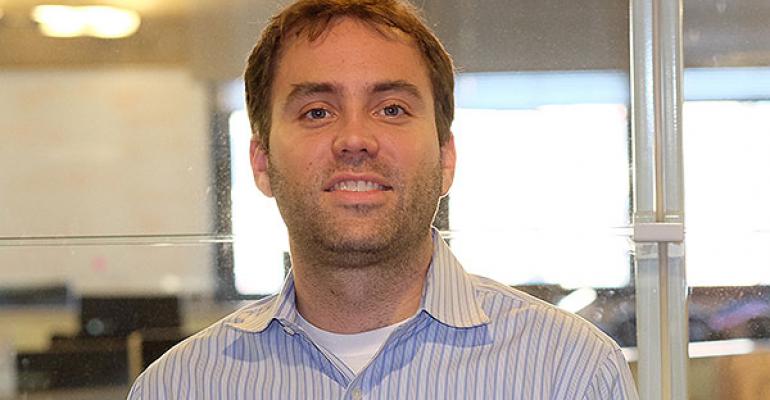 No matter the industry, live events are a great opportunity for brands to reach consumers. With the right type of real-time, relevant content and the power of a shared experience, brands can leverage live events to drive consumer engagement. However, this engagement does not come without effort, and brands struggle to overcome the physical boundaries of a large-scale live event.
No matter the industry, live events are a great opportunity for brands to reach consumers. With the right type of real-time, relevant content and the power of a shared experience, brands can leverage live events to drive consumer engagement. However, this engagement does not come without effort, and brands struggle to overcome the physical boundaries of a large-scale live event.
With hundreds of thousands of attendees swarmed across multiple venues, how can one company reach the maximum number of consumers? This problem is extremely prevalent at live events, like auto shows, where car companies compete on an international scale to engage and convert a mass of potential consumers.
For most car companies, auto show efforts circle around answering two questions. The first is, how do we set ourselves apart? With every major car company in attendance, no brand can assume that consumers will automatically engage with them. Companies must stand out from the crowd. The second question is, how do we get the most value for our investments? While live events are a great source of exposure, they can be both costly and difficult to track for effectiveness and spend.
At the 2015 Philadelphia Auto Show, one of today’s leading car companies, Subaru of America, found that Tagkast’s innovative photo-marketing software was the answer to both questions. Although the Philadelphia Auto Show is one of largest domestic auto shows, Subaru saw its physical scale and booming attendance as strategic opportunities, not threats. By incorporating new photo marketing software, Subaru was able to transform the traditional limitations of live events into strengths.
How photo marketing software helped: Traditional photo-marketing strategies are unreliable at live events because brands cannot predict how or when attendees will interact with them. Even well-planned and sophisticated marketing efforts can go unnoticed if consumers’ attention lands elsewhere. While low engagement at a live event was once a dead-end for marketers, branded photography is helping companies leverage their live event spends.
Beyond adding a simple logo or name to each photo, modern photo-marketing software allows companies to brand photos with images that are particular to the live event. For example, Subaru used our system to brand photos from the auto show with its logo and the hashtag #subarushometown, which highlighted its Philadelphia roots.
With this unique branding, Subaru encouraged auto show attendees to pose for photos in front of its vehicles. These pictures, largely taken with friends and family, were then broadcast in real-time directly from the event. As attendees shared photos via Facebook, Twitter, Instagram and email, the targeted branding on each photo helped Subaru further the following business objectives:
1. Word-of-mouth marketing: With each picture posted online, Subaru reached thousands of new customers. Each attendee who shared a positive experience with Subaru reached his or her network of thousands of friends and family members across multiple platforms. Here, Subaru transformed traditional face-to-face interactions with consumers into viral moments, each serving as a powerful source of branded product recommendation.
This style of marketing is important because, according to a 2013 study by Nielson, 84 percent of respondents cite word-of-mouth recommendations from family and friends as the most trustworthy form of advertising. For Subaru, branded word-of-mouth marketing immediately expanded consumer reach and excitement, as well as driving direct sales later down the customer lifecycle.
Similarly, because all of this sharing was happening across popular social channels, Subaru was able to capitalize of social’s unique strengths. The content was visual, which is strategic because visual content receives 94 percent more engagement than text. The content was expansive, reaching potential consumers at a one-to-many trajectory (communal tagging features assisted Subaru in capturing more networks). And the content was real time, allowing Subaru to engage more consumers despite the auto show’s rapid flow of attendees.
2. Engagement: Not only was Subaru’s branded photography a powerful marketing tool, but its activation process was highly engaging, too. On the floor at the auto show, Subaru used a mobile tablet to encouraged attendees to share their photos right away. The overall marketing experience offered consumers a fun way to encapsulate their experience during the live event and options to share those moments with their social networks. The tablets were optimized for high-quality displays, which can often lead to higher interaction and click rates.
As an added bonus of participating in the sharing process, Subaru hosted a VIP reception, details of which were included during activation. This helped Subaru achieve additional engagement opportunities after the live event, and the company was able to identify a key target audience of more niche Subaru enthusiasts.
Throughout the entire five-day auto show, this event activation offered attendees an exciting and interactive way to engage with Subaru. As attendees captured their real-time experiences and then shared them across their social channels, Subaru secured a reliable source of organic, word-of-mouth product endorsement. While the sheer size of live events can intimidate marketers, Subaru optimized its auto show presence with a digital marketing strategy attuned to modern trends.
The results: Subaru’s strategy at the 2015 Philadelphia Auto Show led to impressive reach and engagement numbers for the brand. With the social amplification of our branded photo-marketing software, the company took just under 2,000 photos and collected just 1,422 emails, but earned more than 400,000 impressions. At the event, word-of-mouth marketing paid off as recommendations were shared across social in a highly-engaging way.
As each photo sharer became a brand advocate, Subaru achieved positive results on social media sites, too. The company’s efforts garnered almost 600 Facebook page likes, 1,405 Facebook tags, 60 Twitter followers and 72 tweets. Although Subaru reached just a small portion of attendees, the company’s branding efforts grew this reach exponentially.
These metrics offered Subaru a more concrete understanding of how well their live event marketing worked. Unlike traditional photo-marketing efforts, which lack the technology to calculate things such as overall impressions, branded photography produced direct insights from the event. With more accurate knowledge of its return on investment, Subaru was able to measure the value of having a live event presence. Moving forward, the company can use this data to make more strategic decisions about future marketing strategies at live events.
As Subaru’s 2015 campaigns suggest, the brand is familiar with the value of strategic marketing. Subaru newest ads promote that "who we are is what we leave behind" and life, as well as business, is about "making memories." The same principles apply to achieving the most productive impact at live events.
As Subaru demonstrated at the 2015 Philadelphia Auto Show, live event marketing needs to leave behind the most positive brand impression while also making memories that extend beyond initial consumer interactions. At live events, proper branded photography can help companies achieve both.
Turning back to our initial questions, it’s clear that innovative photo-marketing software offers brands the means to stand out and achieve value at live events. And Subaru should not be alone in leveraging live events. From auto show to red carpet, musical festival to charity gala, any brand can use photo marketing software to develop unique branding that increases the reach and impact of a live event presence. With branded photography, communal tagging features and aggressive social sharing, companies can elevate the ROI associated with their marketing efforts while minimizing the historic risks involved with marketing at live events.
Joe Matthews is the co-founder and CEO of Chicago-based Tagkast, a social advertising platform that turns event photography into branded content. Before that, while attending Northwestern University Kellogg School of Management, Joe co-founded Poggled, an events and daily deals site for nightlife. Before Kellogg, Joe worked in investment banking and retail consulting.
| Suggested Categories | More from Special Events |
|
|
|
 |
|




